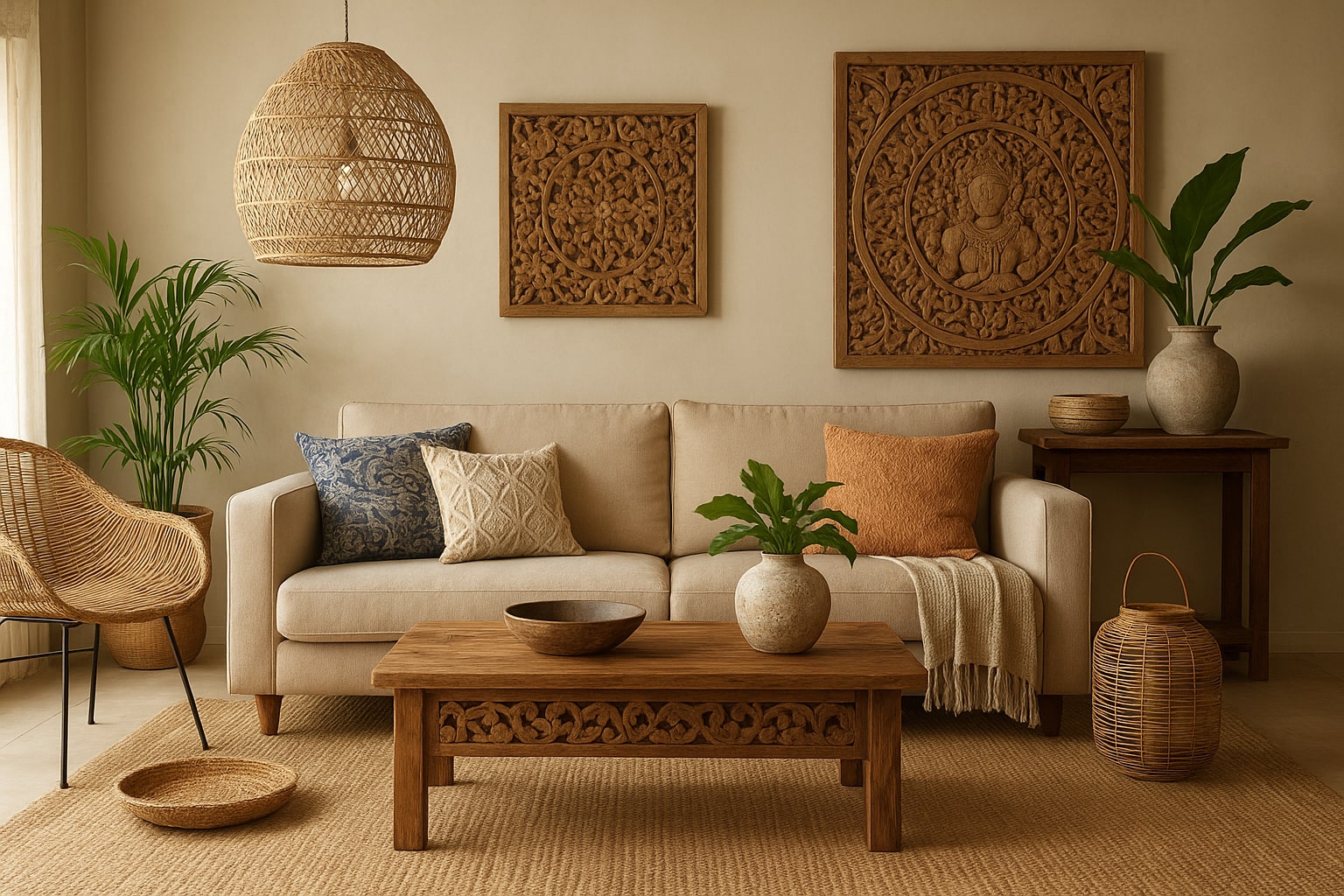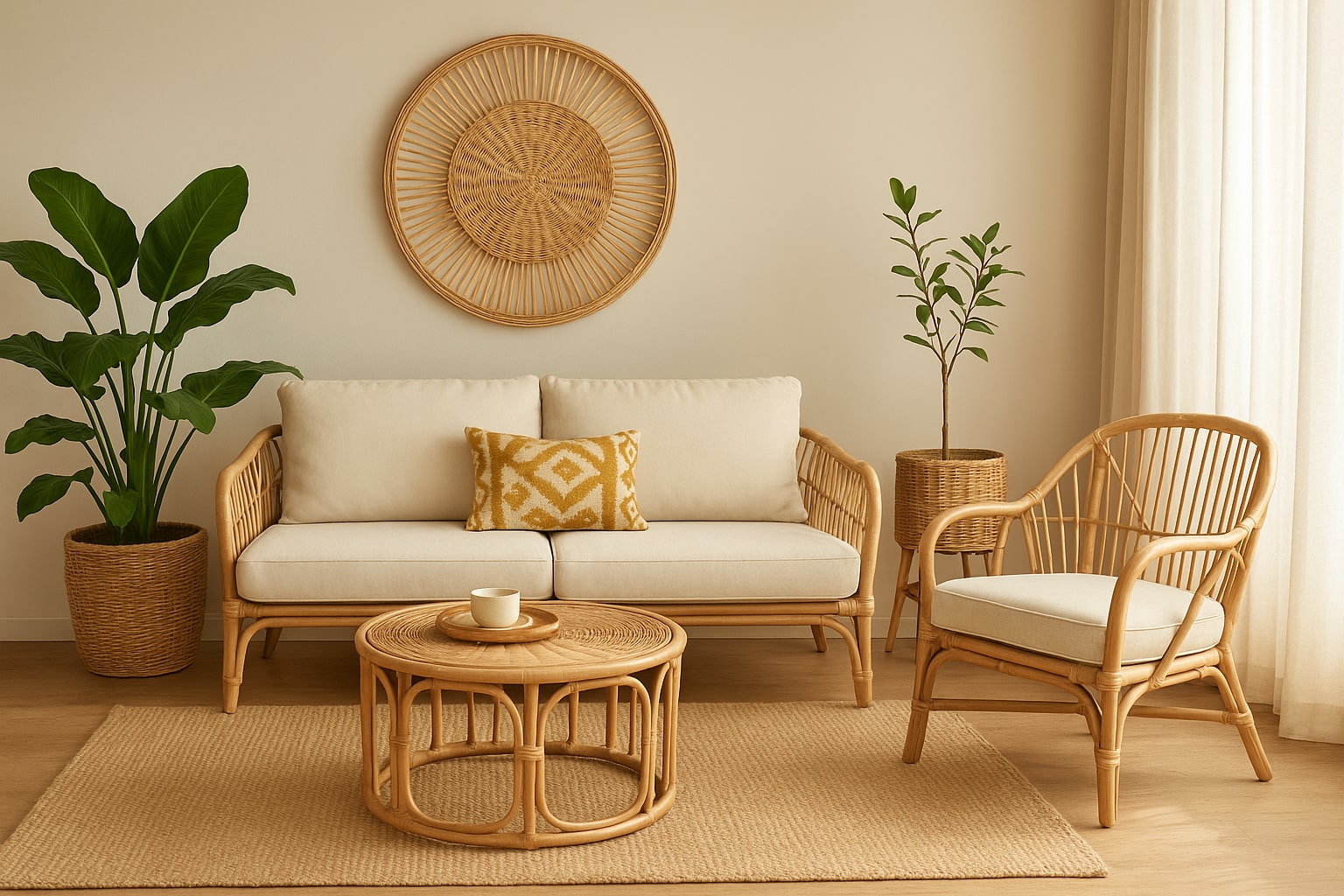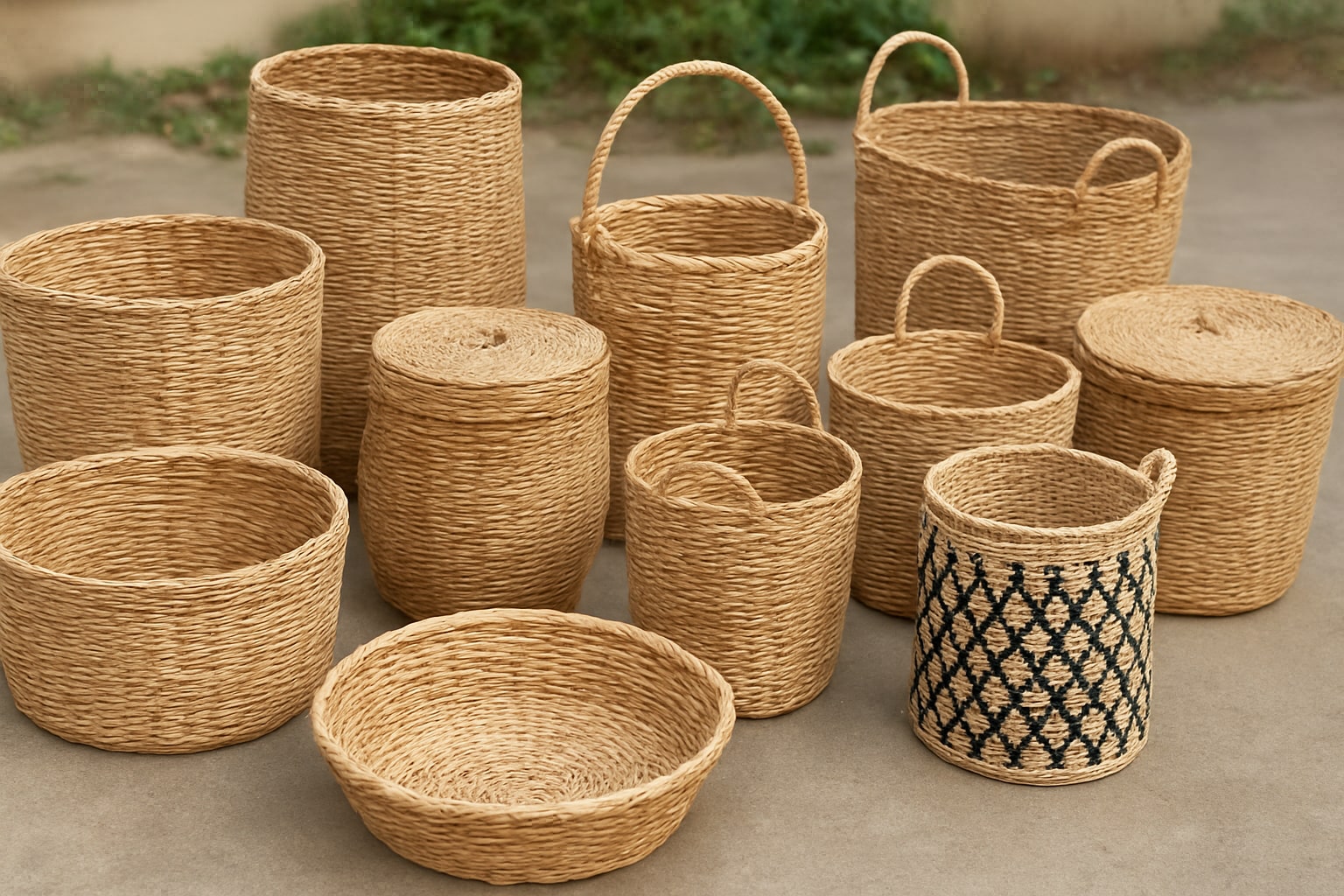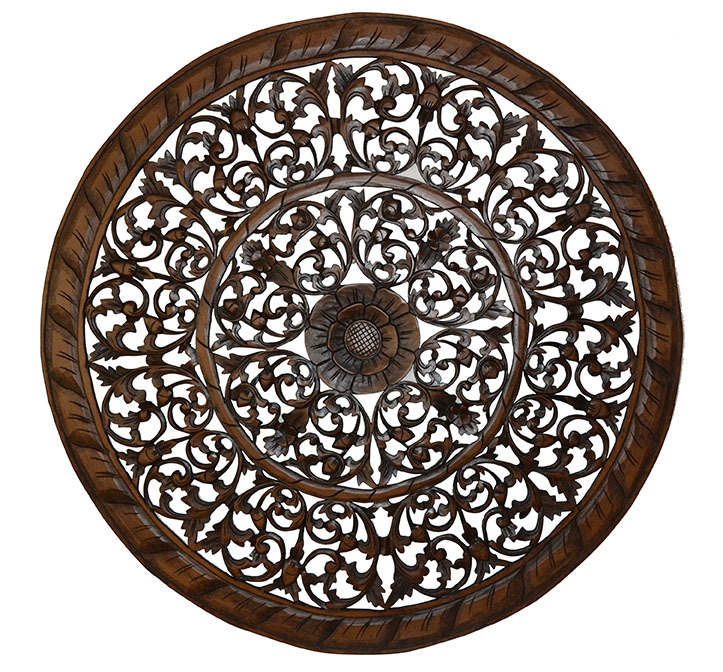Why Bamboo Wind Chimes are So Popular in Australian Backyards (and Yep, Even Balconies)
Alright, let’s get straight to it—bamboo wind chimes are kinda having a moment right now across Australia, and honestly? It’s about time. There’s just something about that soft, hollow clunk-clunk of natural bamboo knocking together in the breeze that gives ya an instant sense of peace. Not that overly metallic ding-ding sound some of those other chimes make—nah, bamboo sounds way more grounded. It’s warm, earthy, soothing. Like the ocean doing a slow exhale.
I’ve been selling handmade bamboo wind chimes from Bali for over a decade now (yep, straight from the artisans I’ve known since my twenties), and the demand from Aussies just keeps climbing. Whether it’s a family in the Gold Coast setting up a tropical vibe on their deck or a retiree in Perth wanting something meditative near their veggie patch, people just love ’em. And they’re not only a beautiful garden feature—they’re legit functional too. They help break up harsh noises, keep cockatoos on edge (seriously), and some folks even say they help with feng shui.
And speaking of feng shui…
Bamboo Wind Chimes & Feng Shui: Real Talk from Folks Who Swear by It
Now, look—I’m not claiming to be some feng shui master. But over the years, I’ve had enough chats with my Aussie customers who are seriously into energy balancing and chi flow, and they swear bamboo chimes make a difference. Especially if you hang ’em in the eastern part of your home or garden. Apparently, bamboo represents wood energy, and placing that in the right sector brings harmony and growth.
I’ve had one customer from Byron Bay—absolute legend, big into spiritual healing—tell me that after hanging a pair of chimes outside her home office, she landed two new clients the next day. Coincidence? Maybe. But she went on to hang more around her yoga deck, and now it’s booked out months in advance.
Another bloke up near Cairns said his chimes helped calm down his overly barky kelpie. Could be the sound masks outside triggers, or maybe it’s just the dog enjoying a good tune. Either way, if you’re even a bit curious about natural energy flow, bamboo chimes are a low-key way to give it a nudge without turning your whole place into a crystal den.
Check also our post about Bali Shopping
What Makes Balinese Bamboo Wind Chimes Different (Spoiler: A Lot)
Alright, now let’s talk details—because not all bamboo chimes are created equal. The stuff I sell? It’s hand-carved by Balinese artisans who’ve been doing this forever. Like, generations-deep kind of craftsmanship. These aren’t mass-produced in a factory somewhere. You can feel the difference the second you hold one.
Each piece of bamboo is chosen for its resonance (yep, bamboo has tone just like wood used in instruments), then cut, sanded, and etched by hand. We don’t use harsh chemicals or glues either. The bindings are made with natural twine, coconut shell tops, and eco-friendly finishes. That’s why they age beautifully—weathered but not wrecked.
And if you’re thinking, “Yeah but do they last in Aussie conditions?”—mate, I wouldn’t be shipping ’em here if they didn’t. I’ve had customers from Melbourne who deal with wet winters and scorching summers and say their chimes still look and sound fab after 5+ years. Bit of care goes a long way too, which we’ll get into shortly.
Where Aussies Are Hanging Their Bamboo Wind Chimes (and Why It Matters)
It might sound silly, but placement makes a big difference. Where you hang your bamboo wind chime can totally change how it sounds—and how long it lasts. Most folks I’ve chatted with across Queensland and New South Wales like putting them under eaves or verandas, where they get that nice breeze without being totally battered by rain.
Got a balcony in a high-rise? Perfect. I’ve had heaps of customers in Brisbane and Sydney hanging ’em off their balcony railings. The wind flow up there is primo. Just make sure it’s secured properly—had a guy lose his in a storm once ’cause he used a flimsy hook (don’t do that, use a proper stainless-steel hook or heavy-duty S-hook, please).
Out west, in drier places like Adelaide or Alice Springs, customers often set them up near garden paths or even pergolas. The trick is airflow—bamboo chimes don’t need gale-force winds to sound lovely, just a gentle push.
And indoors? Yeah, believe it or not, some folks hang ’em inside too. Not for the sound (unless you’re under a fan), but more as décor. Bamboo has this calming, organic feel that just works in Boho-style homes.
How to Choose the Right Bamboo Wind Chime for Your Space (No, One Size Doesn’t Fit All)
Alright, picking the right bamboo wind chime isn’t just about grabbing the first one you see at the market (or online). You want it to suit your space. Size, tone, look—all that stuff matters.
Here’s something I’ve learned over the years: larger chimes give off deeper, more resonant tones. If you’re aiming for that deep, calming vibe—go for chimes over 1 metre. Perfect for quiet gardens or meditation zones. Smaller chimes (say, around 40-60cm) are lighter and give off a more cheerful clack—great for entryways or smaller balconies.
Then there’s the visual side. Some folks love the natural, untreated bamboo look. Others prefer chimes with a bit of detail—maybe hand-painted or engraved with Balinese patterns. I always say: think about what vibe you’re going for. Is it more tropical zen? Or are you after something earthy and rustic?
And don’t forget sound. If you’re ordering online and can’t hear it in person, ask for a video clip or sound sample. I send short clips to my buyers all the time—because once you hear the tone, you’ll know if it’s the right one.
Long-Term Care for Bamboo Wind Chimes (So They Don’t Go Crusty and Sad)
Let’s be real—anything left out in the Aussie sun and rain will wear out eventually. But if you show your bamboo chimes even a tiny bit of TLC, they’ll last you years. I’ve got chimes hanging in my own garden in Ubud that’ve been through monsoons and still sound amazing.
First thing: oil ’em. Yep, bamboo loves a little linseed or teak oil every now and then. Keeps the fibres from drying out and cracking. Once every few months is plenty, especially if they’re in full sun.
Next—location matters. Like I said before, partial shade is best. Avoid hanging them where water pools after storms, and check the cords or twine once in a while. If it starts to fray, swap it out. Nothing sadder than a busted chime falling off its hook mid-wind gust.
Lastly, if you’re going away or packing up for winter, you can bring ’em in. Hang ’em inside for a bit—they actually make great decorative pieces and keep the bamboo happy. Plus, indoor breeze from a fan can still make ’em sing a little tune.
Top Bamboo Wind Chime Styles Aussies are Loving Right Now
Alright, this part’s fun. Over the past year, these have been the best-sellers for my Aussie buyers:
Traditional Balinese Carved Chimes
Think: deep earthy tone, hand-carved ends, and polished coconut shell tops. These are big with people going for a zen garden or tropical Bali-style backyard.
Painted Chimes with Animal Motifs
Super popular with families. I’ve got chimes featuring hand-painted geckos, turtles, and birds. They’re fun, colourful, and a bit cheeky.
Minimalist Natural Finish
For those who want something simple but stylish. No paint, just raw bamboo and a light oil finish. Goes great with modern or coastal homes—especially in places like Byron or Noosa.
Custom Engraved Chimes
I’ve started offering these for weddings and birthdays. You can have names or dates etched into the bamboo—it’s a sweet touch and people love gifting them.

Quick Guide to Buying Bamboo Wind Chimes Online in Australia
Buying chimes online can feel a bit risky, especially if you can’t hear or hold them first. But here’s the thing—you can find beautiful, handcrafted bamboo chimes from Bali (like mine) and have them shipped safely to Oz.
Here’s what I always recommend customers look for:
- Make sure they’re actually handcrafted. If the listing says “machine cut” or looks too perfect, it’s probably mass-produced.
- Ask for sound clips. Any decent seller should be happy to share how their chimes sound in real breeze.
- Check for proper packaging. Bamboo can crack if it’s not packed well. We use recycled padding and double-box for protection.
- Read reviews from other Aussies. Folks usually mention how the chimes held up in local weather, which is super helpful.
Shipping from Bali usually takes about 10–14 days to most Australian cities. Express options are available, but honestly, most people are happy to wait a week or two for something unique and handmade. Especially when it’s coming from a real artisan workshop, not a warehouse.
Are Bamboo Wind Chimes Good for Kids, Pets, and Noise-Sensitive Neighbours?
You wouldn’t believe how many emails I get from Aussie families asking, “Are bamboo wind chimes safe around kids?” or “Will they drive my neighbour nuts?” Fair questions, and honestly, it depends on how and where you hang ’em.
Around Kids
First off—yep, bamboo wind chimes are totally safe for kiddos. There are no sharp edges, no tiny parts that can snap off (at least, not on quality handmade ones like mine), and they’re made from natural materials. I’ve had plenty of customers hang them outside their kid’s bedroom window as a soft white-noise alternative. That gentle knocking sound? Super calming for nap time. One mum from Adelaide even told me her toddler stops mid-tantrum when the chimes start playing. Magic? Maybe. Or maybe just good acoustics.
Now, if you’ve got curious little hands around, make sure you hang the chime high enough. Kids will absolutely tug on it if they can reach it—ask me how I know 😅. I once had a cheeky 5-year-old nephew use one like a jungle gym and pulled the whole thing off the veranda. No one was hurt, but the chime didn’t make it.
With Pets
As for pets—it really depends on the animal. Dogs usually don’t care much unless they’re nervous types. Like I mentioned earlier, one customer up in FNQ said his dog actually calmed down once he installed a bamboo chime outside the kennel. Maybe the rhythm of the sound muffled traffic or other dogs barking?
Cats, though? They will try to bat at the tubes if they’re close enough. It’s basically a moving toy to them. So again—hang it high. And don’t worry about toxicity or anything. We don’t use any harsh varnishes or weird chemicals on the bamboo. Just coconut oil or light teak oil, and that’s pet-safe.
Neighbours Who Hate Noise
And then there’s the neighbour question. This one cracks me up because I’ve had people buy chimes specifically to annoy someone (don’t do that, it’s rude 😄), and others avoid chimes altogether ’cause they’re scared of complaints.
Good news: bamboo chimes are much softer than metal ones. They don’t make that sharp pingy sound. It’s more like a mellow “clok…clok…clok” when the wind picks up. Most people find them relaxing, not annoying. But if you live in an apartment or close quarters, maybe avoid hanging them near shared walls or bedroom windows. Common sense stuff, really.
Common Bamboo Wind Chime Problems (and How to Fix ’Em Without Tossing It)
Let’s get into the nitty-gritty. Like anything left outside, bamboo chimes can get a bit cranky if they’re not cared for. But before you chuck one out, check this list—most problems are fixable without needing to buy a new one.
My Chime’s Not Making Any Sound Anymore
This one’s usually because the striker (the bit that hits the tubes) isn’t moving enough to tap them. Maybe the wind died down, or maybe the chime’s tangled up. Give it a gentle shake to untangle the tubes and make sure the striker’s still positioned in the centre.
If the breeze in your area is too gentle, try relocating it. Higher-up spots like pergola beams or deck railings often catch more wind. And weirdly enough—angled corners or near fences can actually amplify airflow and give it that little extra nudge.
The Bamboo’s Gone Grey or Mouldy
Totally normal, especially in humid spots like the Top End or coastal towns. Bamboo naturally fades a bit over time, kind of like outdoor furniture. But if it’s getting mouldy? That’s moisture trapped inside.
Quick fix: bring it inside, give it a wipe-down with a mix of vinegar and warm water, then let it dry completely. After that, rub a bit of linseed oil or coconut oil on the tubes. It helps prevent more moisture absorption and keeps the bamboo lookin’ schmick.
Strings Are Fraying or Snapping
Alright, this is one of the few “wear and tear” bits you will need to replace eventually. Most high-quality bamboo wind chimes are tied with natural hemp or jute twine. Looks great, but yeah—it won’t last forever in strong UV.
What I do: every year or so, I check my chimes and re-tie any cords that look dodgy. You can grab a roll of waxed twine or outdoor-rated string from Bunnings. Just mimic the original knots or message me and I’ll walk ya through it. Don’t bin the whole chime just ’cause one string gave up, alright?
Seasonal Wind Chime Swaps: Should You Change Them Up Through the Year?
Okay, this one’s a bit niche—but surprisingly common among my regulars in Melbourne and Tassie. They ask if it’s worth swapping out their wind chimes depending on the season, like people do with cushions or garden plants.
Honestly? Why not! Some folks have a lighter, brighter painted chime for summer, then switch to a bigger, bassier one in winter. The heavier ones hold up better in gusty storms and the deeper tone feels…well, kinda cozy. You know how a crackling fire has that deep rumble? Same vibe.
Also, it keeps things fresh. If you’re a bit like me and get bored with how your outdoor space looks, rotating your bamboo wind chimes seasonally is a simple little upgrade without much fuss. Just store the off-season ones indoors and give them a quick oil-up before hanging ’em back up.
Matching Your Wind Chimes With Garden Styles (Yep, It Makes a Difference)
Let’s say you’ve got a specific style going in your garden—maybe it’s lush tropical, or more coastal Hamptons, or even native Aussie bushland. You can match your bamboo wind chimes to that style and make it feel even more intentional.
Tropical & Bali-Inspired Gardens
Go big, bold, and carved. The classic coconut top with long, natural bamboo tubes fits in perfectly. Hang them near banana palms, ferns, or even a frangipani tree. Add a stone Buddha or a small water feature nearby? You’re golden.
Coastal or Hamptons Vibe
Stick to natural or white-washed bamboo chimes. Keep it minimalist—no bright colours or loud carvings. Hang them where they catch the sea breeze, near light-toned decking or white fences. The whole vibe should say “relaxed summer afternoon.”
Native Bush Gardens
Go with raw bamboo and avoid anything too polished. Let the chime look a bit weathered. I’ve had some customers hang chimes from old eucalyptus branches or string them between bush poles. Let it blend with the gums and wattles, and it just works.
Gift Ideas Using Bamboo Wind Chimes (It’s Not Just a Grandma Thing Anymore)
Okay, last thing before I take a break and make a cuppa—bamboo wind chimes have turned into a bit of a go-to gift lately. Birthdays, weddings, housewarmings—you name it. And not just for retirees anymore.
I’ve had 20-somethings order custom-painted ones for baby showers (“something calm for the nursery”), and couples celebrating their 10-year anniversary with engraved chimes marked with the date they met. Wildly sweet, right?
One bloke in WA ordered five chimes with different quotes burned into each tube for his wife’s 40th. Took me hours, but man was she stoked. He hung them around their property like little message points. Every time the wind blew, she’d hear one of the phrases. Gotta admit—I got a bit teary over that one.
If you want to give a bamboo wind chime as a gift, here’s the thing: make it personal. Whether that’s a message, colour choice, or even the size—it’s all about showing thought. And Aussies? We love gifts that are natural, handcrafted, and not off some warehouse shelf.







